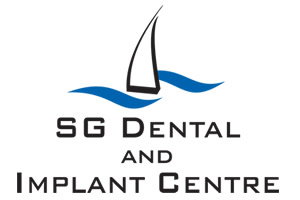Who Might Need A Dental Bridge?
Where teeth have been lost, a dental bridge can be used to close the gap in your smile
In many of our blogs, we have advocated the use of dental implants to replace missing teeth, and with good reason. These are undeniably the strongest and longest lasting option currently available as well as being the most realistic looking. They are not the only tooth replacement method in use though and, in addition to dentures, bridges can also be provided at our Burton dental surgery.
Although bridges may have gone ‘out of fashion’ a little with newer methods, they can still be used and may be the best option in certain situations. In today’s blog, we will take a look at the use of bridges and how to care for them.
What is a dental bridge?
It is known as a bridge as it is used to ‘bridge’ a gap between teeth. They are often used when a number of consecutive teeth are missing. In essence, they consist of a number of replacement teeth attached to a cap, or crown, at either end. They are fitted by attaching the cap to the teeth on either side of the gap and offer a secure tooth replacement option.
Most bridges are made from porcelain but these can be reinforced with metal in areas of the mouth where additional strength is needed for chewing etc. One factor which can deter some patients from this treatment is the fact that the dentist needs to prepare the teeth that the crowns will be attached to. This usually means shaping them and removing some of the tooth so that the crowns fit securely. In many cases, this will have to be done to teeth that are otherwise healthy. This is one of the reasons why people seeking a secure tooth replacement are turning to dental implants instead, as they do not require this part of the procedure.
Who would have a bridge?
The obvious answer to this would be ‘someone with missing teeth’, but as we have said earlier, teeth implants offer the wearer a longer lasting and generally better experience; so why have a bridge? There are a few possible reasons.
Firstly, some people simply cannot bring themselves to have implants due to the fact that they have to be placed into the jawbone. The idea of the bone being ‘drilled’ into can make this seem a scary procedure and, despite the fact that it is a sophisticated, relatively painless and safe one, the reality is that some people just can’t bring themselves to have the procedure, often due to dental anxiety. Although preparing the teeth to attach the crowns is an invasive treatment, in some people’s mind it isn’t to the same degree as having an implant placed.
Another patient who might opt for a bridge is someone who intended to have dental implants, but following their scan, were found to have insufficient bone into which the implant could be placed. As we know, this is essential for a successful placement. Bone grafts and/or sinus lifts can be carried out prior to an implant procedure but for those who don’t wish to take this additional step, bridges provide another option.
Getting used to your bridge
As with any tooth replacement system, it may take a little getting used to after it has been fitted. This is especially the case if your teeth have been missing for a while. In time, you will become accustomed to them and won’t give it a second thought but, as with implants and dentures, we recommend that our Burton patients that have a bridge, start off by eating softer food initially, gradually building up to your normal diet over a period of time. Doing this will allow you to gradually become used to this new ‘object’ in your mouth.
Some patients find that their speech may be affected a little initially and you may salivate more than usual. This is perfectly normal and ‘normal service’ will resume in a short period of time as your body becomes used to your new bridge.
Cleaning a bridge
Although your dental bridge is made from artificial materials and can’t decay, you still need to look after it. This is not only to minimise any risk of staining but also to protect the gums and the natural part of the teeth that the crowns are attached to. As with natural teeth, cleaning is done using a toothbrush, taking care to brush correctly and for long enough. Flossing is also important to clean beneath the bridge where food and bacteria can become trapped. Our team will be happy to offer advice on bridge hygiene.
Having missing teeth is not only an unattractive look but can make eating and even speaking difficult too. At Mike Allen’s Dental Practice, we offer our patients a choice of dentures, dental implants or a bridge and we’ll be pleased to discuss the pros and cons of each with you.
If you have missing teeth and would like our help, you can call us today on 01283 845345.
